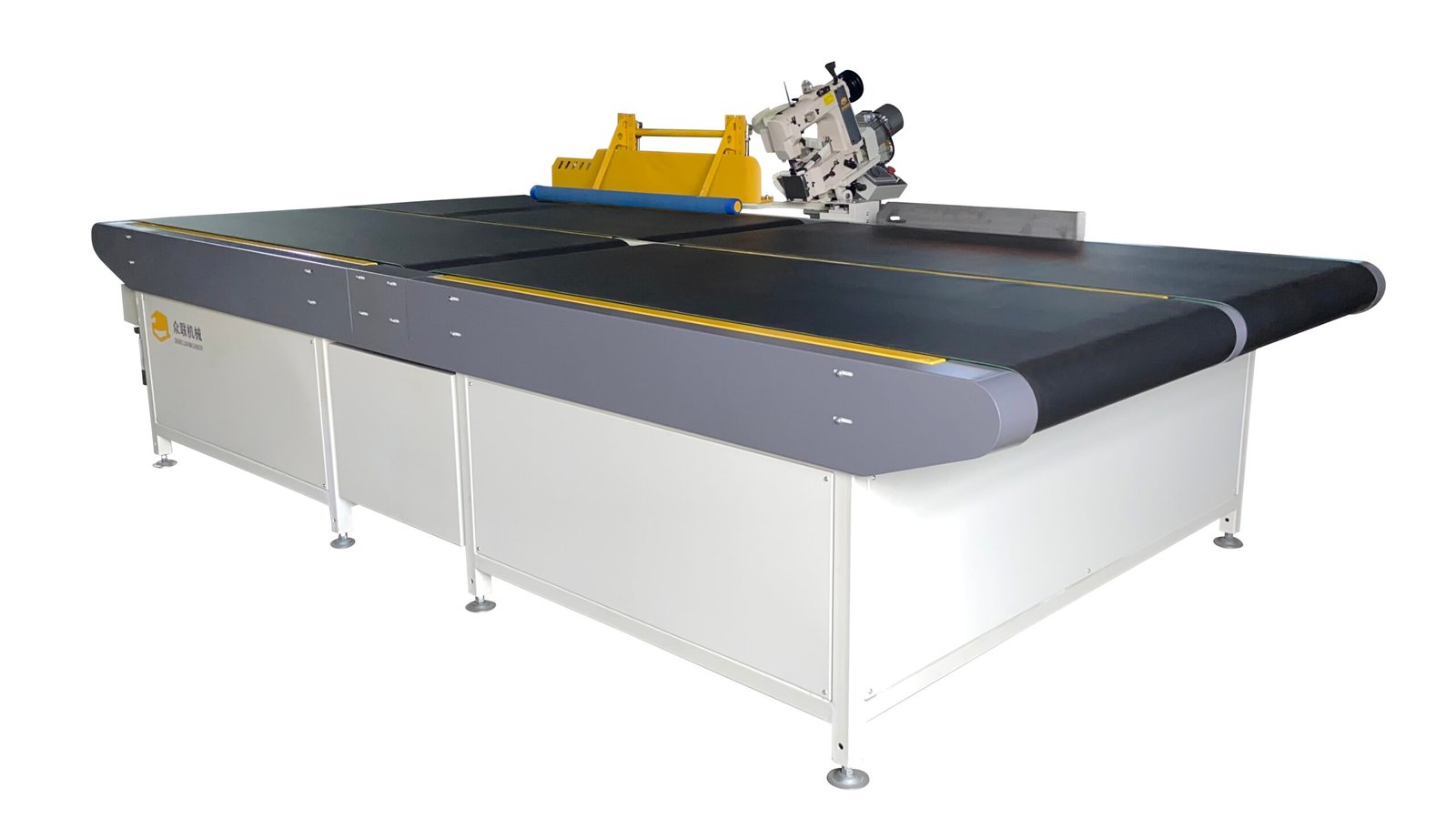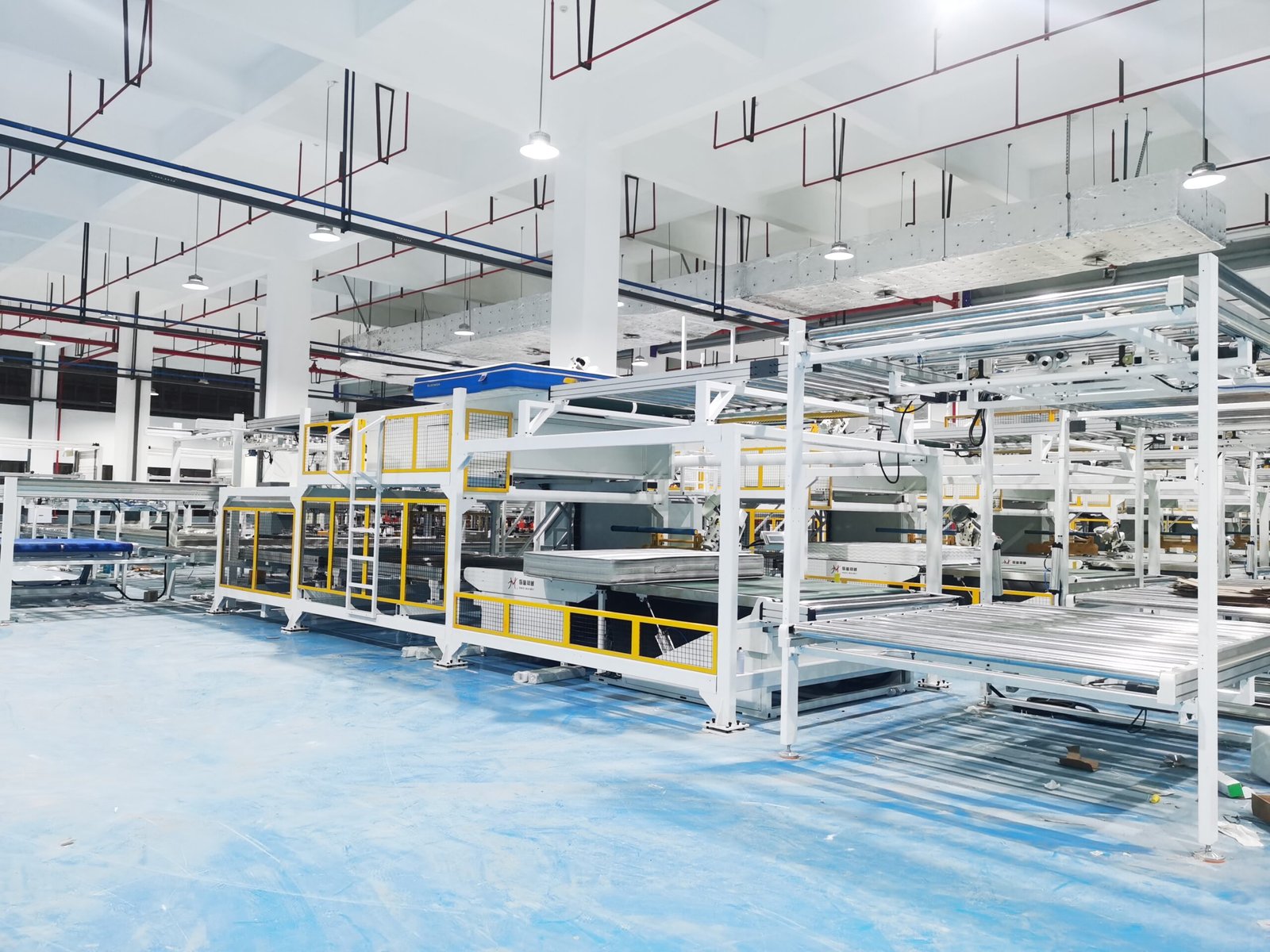Struggling with high labor costs, inconsistent stitching, or slow turnaround in mattress manufacturing?
Automatic mattress sewing machines solve these problems by streamlining the stitching process with consistent speed, quality, and automation.

If you’re trying to scale up your mattress production, reduce operator errors, and stay competitive in today’s fast-paced market—this guide is for you.
What makes automatic sewing machines ideal for mattress production?
Manual processes slow down production and increase inconsistency in mattress stitching.
Automatic mattress sewing machines improve speed, stitch consistency, and reduce manual labor in large-scale manufacturing.

Dive deeper: Understanding their core benefits
💡 Automation reduces human error
Machines operate with programmable logic. They don’t get tired or distracted. That alone increases productivity and reduces the error rate dramatically.
⚙️ Consistency is key
Uniform stitches aren’t just a visual thing—they affect the structural durability of your product. Automatic systems eliminate skipped stitches, tension issues, and misaligned seams.
🔁 Designed for scale
Whether you’re producing 200 or 2000 mattresses per day, automatic machines keep up. Many models come with programmable patterns for different mattress styles and can adapt quickly to new orders.
| Feature | Manual Sewing | Automatic Sewing |
|---|---|---|
| Stitch Accuracy | Operator dependent | Programmable precision |
| Operator Fatigue | High | Minimal |
| Output per shift | 80–150 units | 250–600+ units |
| Pattern Flexibility | Limited | High (with saved templates) |
| Labor Requirement | 2–3 operators per station | 1 operator for oversight |
Our factory used to run 5 manual stations. Switching to 2 automatic units tripled our output with half the staff. That’s not theory—it’s my personal experience.
What key features should I look for?
Not all machines are built equal. Features determine if the machine fits your production flow or slows it down.
You need to consider stitch control, programming interface, changeover time, and durability before investing.
Dive deeper: Machine features that matter
🧵 Stitch type and pattern library
Look for machines that can do chain stitch and lock stitch. Also, make sure the software supports various quilting or edge-pattern styles.
💻 Interface and software
A touchscreen interface with memory for pattern presets helps operators set up in minutes. Avoid machines that require manual dials or outdated firmware.
⚙️ Speed control
High-speed is important, but adjustability is more important. Look for servo motor control that allows you to dial in the perfect rate for different materials.
🛠️ Maintenance access
Choose machines with tool-free access panels for threading and cleaning. Machines with self-lubrication and auto tension adjustment cut downtime.
| Specification | Minimum Standard | Ideal Specification |
|---|---|---|
| Stitch Speed | 1500 SPM | 2500+ SPM (Stitches Per Minute) |
| Touchscreen UI | Optional | Included with USB + cloud upload |
| Supported Patterns | 10+ basic | 50+ editable and savable |
| Material Thickness Support | ≤10 cm | 25–35 cm mattress layers |
| Stitch Type | Chain | Chain + Lock with auto switch |
We’ve used models from two major brands, and the ones with real-time monitoring and troubleshooting cut our downtime by 70%.
How does it integrate into the production line?
Buying a fast machine doesn’t help if it blocks your next station.
Automatic mattress sewing machines are designed to fit seamlessly into conveyor-style production lines.
Dive deeper: Streamlining your workflow
🔄 Conveyor compatibility
Most automatic machines are height-adjustable and come with programmable conveyor syncing. That means they start sewing only once the mattress reaches the correct position.
🧩 Modular setup
Good machines allow modular upgrades. You can connect them to your foam lay-up station or border sewing unit.
📈 Real-time data sync
Some models offer Ethernet/WiFi connectivity to share operational data with factory software. That helps you track uptime, error rates, and productivity per operator.
🤝 Collaboration with other machines
Modern lines often include:
- Automatic tape edge machine
- Border overlock sewing unit
- Stacking or flipping robots
Your sewing machine should be compatible with at least two downstream automation modules.
| Function | Manual Flow | Integrated Automated Line |
|---|---|---|
| Operator Coordination | Manual cueing | Sensor-triggered handoffs |
| Mattress Tracking | Paper tags | Barcode or RFID |
| Batch Control | Manual logs | Central dashboard with logging |
| Error Handling | Stop-and-check | Auto alert + resume system |
After integrating sewing with our CNC cutter and foam stacker, our production line went from 2.5 hours to 55 minutes per mattress.
What does it cost and is it worth it?
Some owners hesitate because of the upfront investment—but that short-term cost often unlocks long-term profitability.
Automatic machines cost more, but their ROI comes from reduced labor, fewer errors, and much faster turnaround.
Dive deeper: ROI and investment breakdown
💰 Typical cost range
- Entry-level semi-auto: $8,000 – $12,000
- Mid-range programmable: $15,000 – $25,000
- High-end full automation: $30,000 – $45,000
🧮 ROI calculation (example)
If one operator on a manual line outputs 100 units/day:
- Labor cost = $80/day
- Mistake rate = 3%
- Daily cost of errors and labor = $80 + $60 waste = $140
With an automatic machine:
- Output = 300 units/day
- Labor cost = $40/day (oversight only)
- Mistake rate = 0.5%
- Daily cost = $40 + $10 = $50
Payback period = Machine cost ÷ Daily savings
= $20,000 ÷ ($140–$50) = ~223 days
That’s less than 8 months.
| Cost Factor | Manual Sewing Line | Automatic Sewing Machine |
|---|---|---|
| Upfront Cost | $3,000 – $5,000 | $15,000 – $40,000 |
| Daily Output | 80–150 units | 250–600 units |
| Operators Needed | 2–3 | 1 |
| Training Time | 2–4 weeks | 2–3 days |
| Yearly Maintenance | High | Low (preventive only) |
We recovered our investment in under 6 months and haven’t looked back.
Conclusion
Automatic mattress sewing machines are not just faster—they’re smarter, more consistent, and far more scalable. For anyone serious about growth in mattress manufacturing, they’re the future.
https://mattressmachineryzl.com/wp-content/uploads/2025/02/mattress-spring-machine5-scaled.jpg
